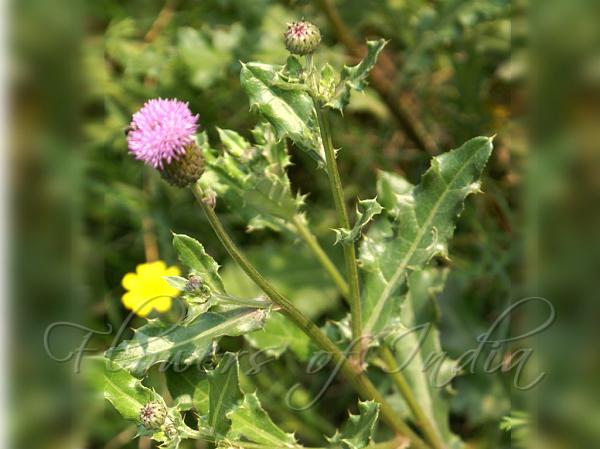|
| Creeping Thistle |
|

|

| File size | 214250 |
| Original date | 2/23/10 10:50 PM |
| Resolution | 1024 x 768 |
| Flash | Flash did not fire, auto |
| Focal length | 70.0mm |
| Exposure time | 1/160s |
| Aperture | 8.0 |
| Focus Distance | |
| Metering Mode | Multi-segment |
| Camera make | SONY |
| Camera model | DSLR-A100 |
| Sensor type |
|
|
|
|
Photo: |
Botanical name: Cirsium arvense Family: Asteraceae (Sunflower family)
Synonyms: Carduus arvensis, Serratula setosa, Cirsium setosum
Synonyms: Carduus arvensis, Serratula setosa, Cirsium setosum
Creeping Thistle is a tall herbaceous perennial plant growing 1-3 ft,
forming extensive clonal colonies from an underground root system that
sends up numerous erect stems each spring, reaching 1–1.2 m tall. The
stems often lie partly flat by summer but can stay erect if supported by
other vegetation. The leaves are very spiny, lobed, up to 15–20 cm long
and 2–3 cm broad, smaller on the upper part of the flower stem. The
flower-heads are 1-2.2 cm in diameter, pink-purple, with all the florets
of similar form (no division into disc and ray florets). The seeds are 4–5
mm long, with a feathery pappus which assists in wind dispersal. The plant
also spreads underground using Rhizomes. Creeping Thistle is native throughout
Europe and northern Asia, and widely introduced elsewhere. In India it
is found in the Himalayas, from Kashmir to C. Nepal, at altitudes of
250-3600 m. Flowering: March-August.
| Identification credit: Gurcharan Singh | Photographed in Delhi & Nubra Valley, Ladakh. |
• Is this flower misidentified? If yes,